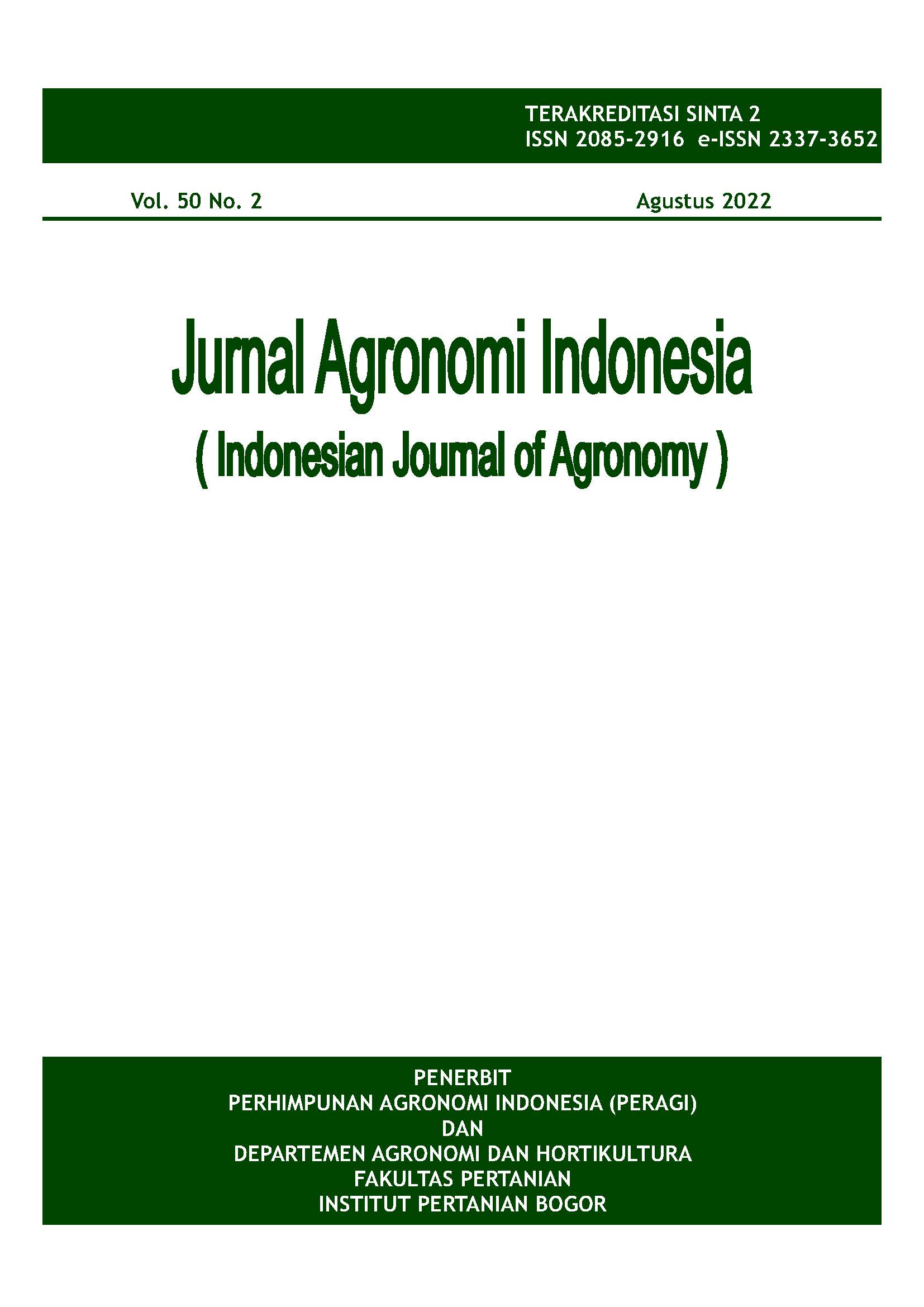Nitrogen Fertilizer Reduction on Way Apo Buru and Inpari 33 Rice Varieties
Abstract
Urea fertilizer usage in farmers is mostly applied at a higher dose than the standard dose of recommendation. The excessive urea fertilizer usage decreased the plant productivity and quality, also polluting the soil. The experiment aimed to observe the growth, yield, and quality response of rice in low N supplements. The experimental design used a factorial randomized complete block design, i.e., urea doses (0%, 40%, 100% 250 kg ha-1) and rice varieties (Way Apo Buru and Inpari 33). The traits observed were plant height (cm), number of tillers, number of leaves, chlorophyll fluorescence (unit), grain content (%), number of panicles, content of dissolved protein (mg g-1), ascorbic acid (mg g-1), reducing sugar (mg g-1). The results showed that a reduction of 40% urea produced the same higher number of tillers compared to the standard dose (250 kg ha-1). The standard dose of urea resulted in the highest ascorbic acid content, value of chlorophyll fluorescence, and number of panicles. Inpari 33 produced higher plant height and grain content meanwhile Way Apo Buru produced a higher number of leaves. The reduction of 40% urea in Inpari 33 resulted in the highest dissolved protein content. Inpari 33 produced the lowest reducing sugar and could be used as an alternative food for diabetics.
Keywords: chlorophyll content, dissolved protein, reducing sugar, vitamin C














